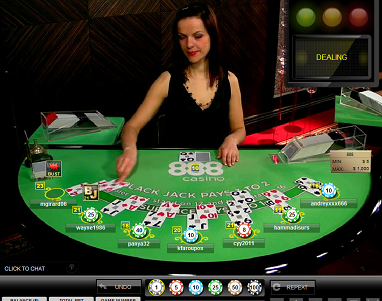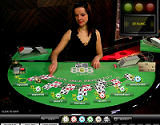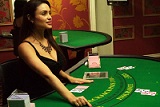Counting Cards
Can you do basic elementary math? If so, then you can become a professional blackjack counter. It is that easy. Card counting
is a combination of simple math, memory and multi-tasking. The first two anyone can do, but it is the multi-tasking that is generally the downfall
for the novice card counter.
Before we get too involved in how card counting works, lets me show you how to count cards. The most basic card counting method is the Hi-Lo system.
The Hi-Lo system works by adding one to the count for each 2, 3, 4, 5 and 6 card. You will also subtract one
from the count for each 10, face card and Ace. Sevens, eights and nines will have no effect on the
count. For example, if all the cards played were (4, 2, 3, 9, 10, 8, 3, 4) then the count would be +4 (1+1+1+0-1+0+1+1 = +4). If that took you more
than 2 seconds count, then you are going to need to practice your card counting skills, don't worry 99% of you will need to practice before going
to the casino to count cards. In the above example +4 was the count, but the true count will depend on the number of decks left. To get the true count
you will need to divide the count by the number of decks left in the shoe. For example, if there are four decks left then the true count would only be
+1 (+4/4 decks = +1), but if there is only half a deck left, then the true count would be a +8 (+4/0.5 decks = +8). At +1,
you just barely have an edge over the casino, but at +8 you have a large edge over the dealer.


